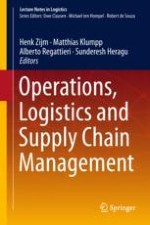This book provides an overview of important trends and developments in logistics and supply chain research, making them available to practitioners, while also serving as a point of reference for academicians. Operations and logistics are cornerstones of modern supply chains that in turn are essential for global business and economics. The composition, character and importance of supply chains and networks are rapidly changing, due to technological innovations such as Information and Communication Technologies, Sensors and Robotics, Internet of Things, and Additive Manufacturing, to name a few (often referred to as Industry 4.0). Societal developments such as environmental consciousness, urbanization or the optimal use of scarce resources are also impacting how supply chain networks are configured and operated. As a result, future supply chains will not just be assessed in terms of cost-effectiveness and speed, but also the need to satisfy agility, resilience and sustainability requirements. To face these challenges, an understanding of the basic as well as more advanced concepts and recent innovations is essential in building competitive and sustainable supply chains and, as part of that, logistics and operations. These span multiple disciplines and geographies, making them interdisciplinary and international. Therefore, this book contains contributions and views from a variety of experts from multiple countries, and combines management, engineering as well as basic information technology and social concepts. In particular, it aims to: provide a comprehensive guide for all relevant and major logistics, operations, and supply chain management topics in teaching and business practiceaddress three levels of expertise, i.e., concepts and principles at a basic (undergraduate, BS) level, more advanced topics at a graduate level (MS), and finally recent (state-of-the-art) developments at a research level. In particular the latter serve to present a window on current and future (potential) logistics innovations in the different thematic fields for both researchers and top business practitionersintegrate a textbook approach with matching case studies for effective teaching and learningdiscuss multiple international perspectives in order to represent adequately the true global nature of operations, logistics and supply chains.
